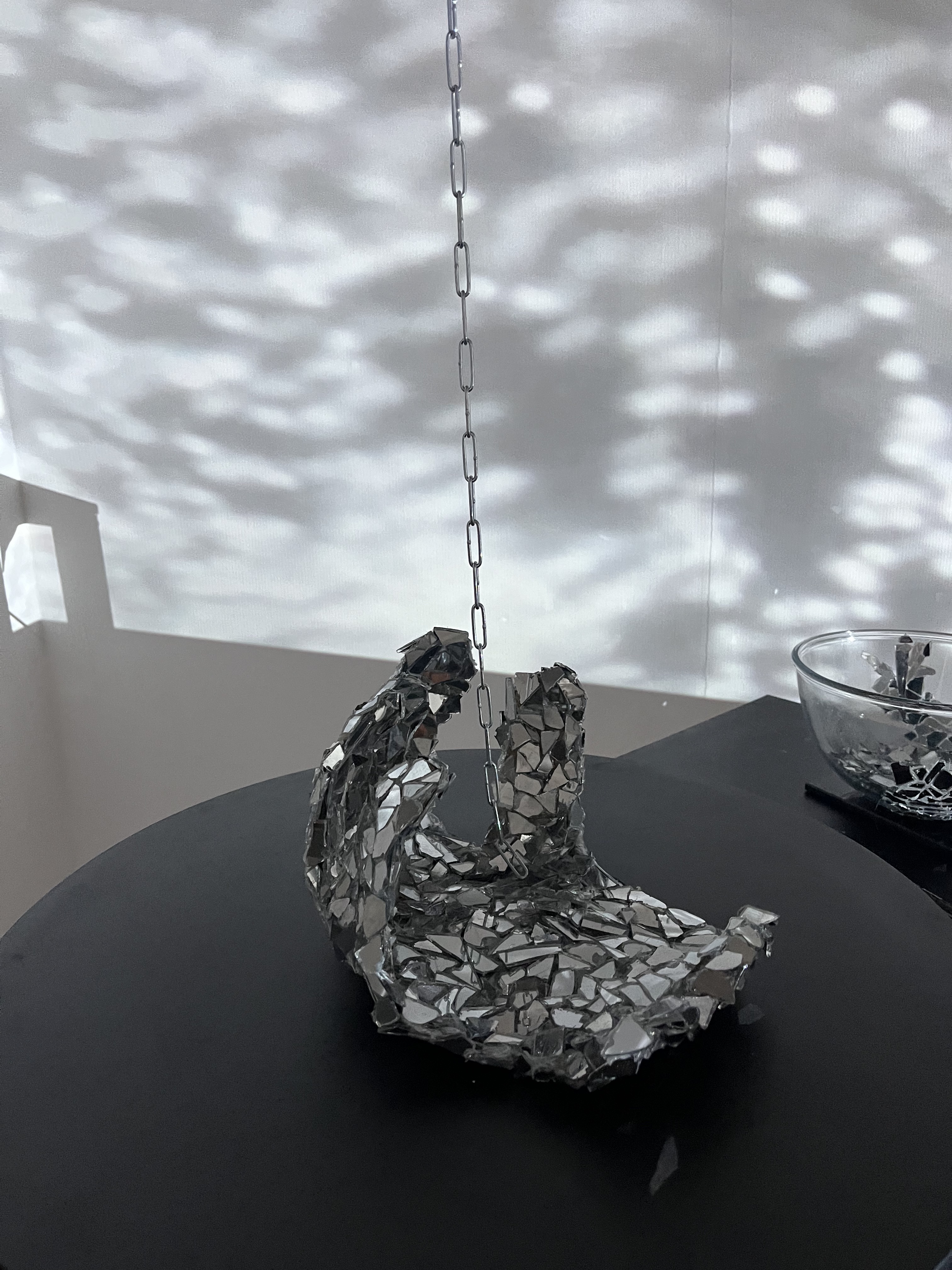TIME FOR REVOLUTION
TIME FOR REVOLUTION


TIME FOR REVOLUTION
As a spectator who can’t take any more of the news—each story worse than the next,
As an activist tired of seeing that nothing can be resolved by talking to institutions,
As a human being fed up with sterile communications that bring no action for those affected,
As a social being who, despite herself, belongs to capitalist society, feeling powerless, as if her voice— even when shouting at demonstrations— is never heard...
It’s as if the body must become the battleground for my struggles, because a body—dead or alive—seems to say more than voices or words that sink into oblivion.
With my own body, I want to shout my indignation at a humanity that learns nothing from its past mistakes. We are stuck in a perpetual cycle, as our old friend Plato might say, and it’s time to break this circle.
I’ve been waiting for the Messiah, but now that they’re clearly not coming, it’s up to us to come together and fight for an end to the desperate agony of a humanism that no longer resonates beyond borders.
If the words and images shared across all our fabulous social networks don’t make the elites—who clearly have the power to resolve poverty, social, and medical injustices—react, then let’s take up arms, WE ARTISTS, and burn all these arid, endless talks.
Without artists to tell the story, the world will remain a barren wasteland, where only aimless, detached capitalism will grow, serving merely to exchange a currency that doesn't actually exist if we stop using it.
The only real currency that exists is our exchange—from being to being, from idea to idea, from image to image.
That’s what history will remember.
!! Happy burning year of 2025 !!
Performance written by Sarah Konté
Directing and Shooting by Meredith Marlay
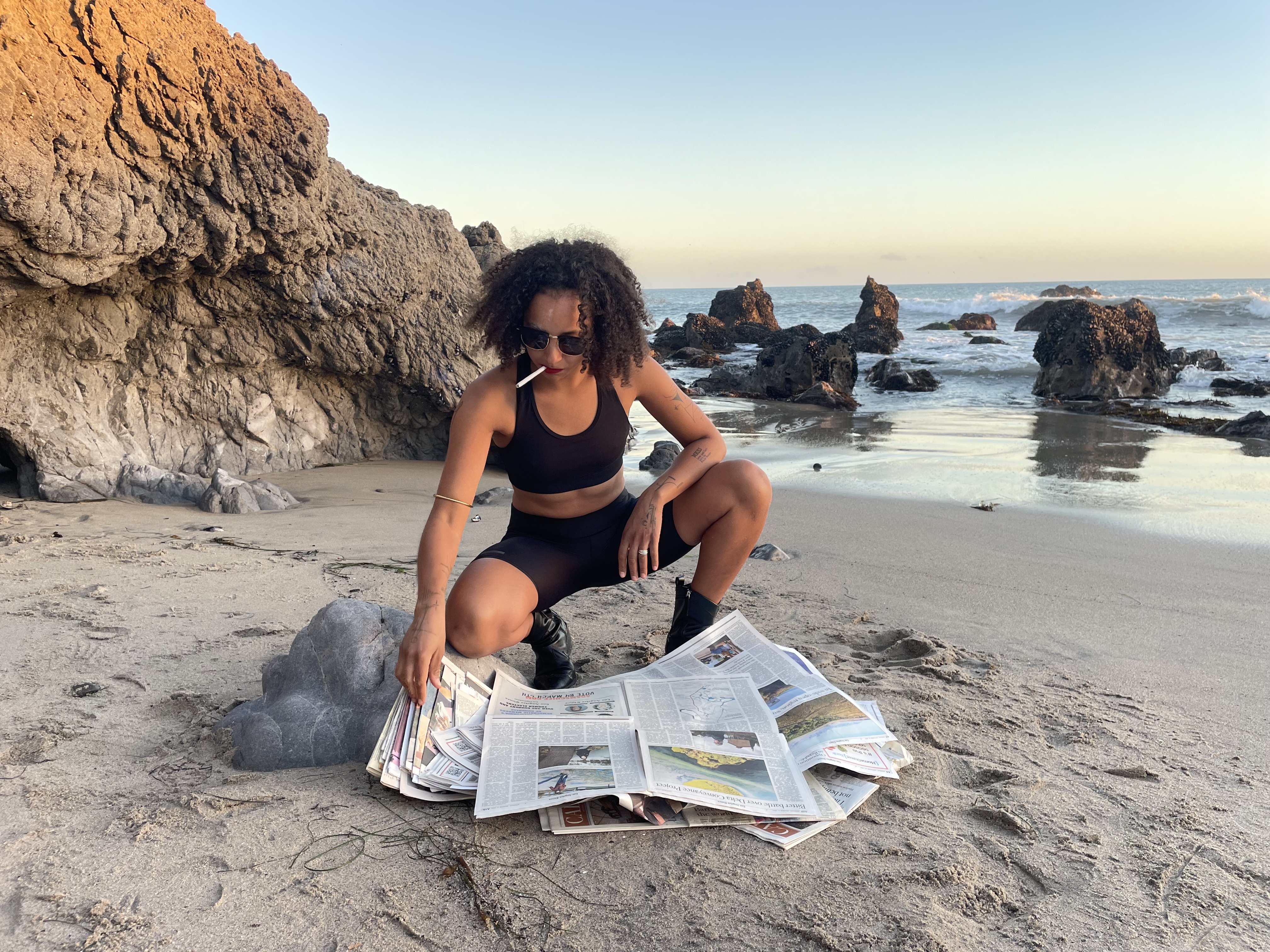














When silence speaks louder than words and the gaze is drawn in by the tension of our bodies in motion.
An attempt at communication begins to take shape between two bodies that remain voiceless, in a deafening silence, reflecting their own questioning of a body that is different.
Through the desire to embrace an identity that is other Through the will to accept a language that is foreign to me,
I choose you, I allow myself to be overwhelmed by the range of your gestures, which, through their dance, manage to make me hear what the voice cannot express.
I then close my eyes for a moment, and your face becomes the echo of a word, common to all, the tenderness that shines in the night, at the curve of a caress.
And thus, words blossom like a meadow sinking into a sleeping dream.
///////
Lorsque le silence en dit plus que les mots et que le regard est aspiré par la tension de nos corps en émoi.
Une tentative de communication s’esquisse entre deux corps qui restent sans voix, dans un silence hurlant, reflet de leur propre questionnement d’un corps qui est autre.
Par le désir d’embrasser une identité autre
Par la volonté d’accepter un langage qui m’est étranger,
Je te choisis, j’accepte de me laisser envahir par l’éventail de tes gestes qui, par leur danses, parviennent à me faire entendre ce que la voix ne peut énoncer.
Je ferme alors un instant les yeux et ton visage devient l’écho d’une parole, commune à tou.te.s, la tendresse qui rayonne dans la nuit, au détour d’une caresse.
Et ainsi les mots fleurissent comme une prairie qui sombrerait dans un rêve endormi.
SARAH KONTÉ



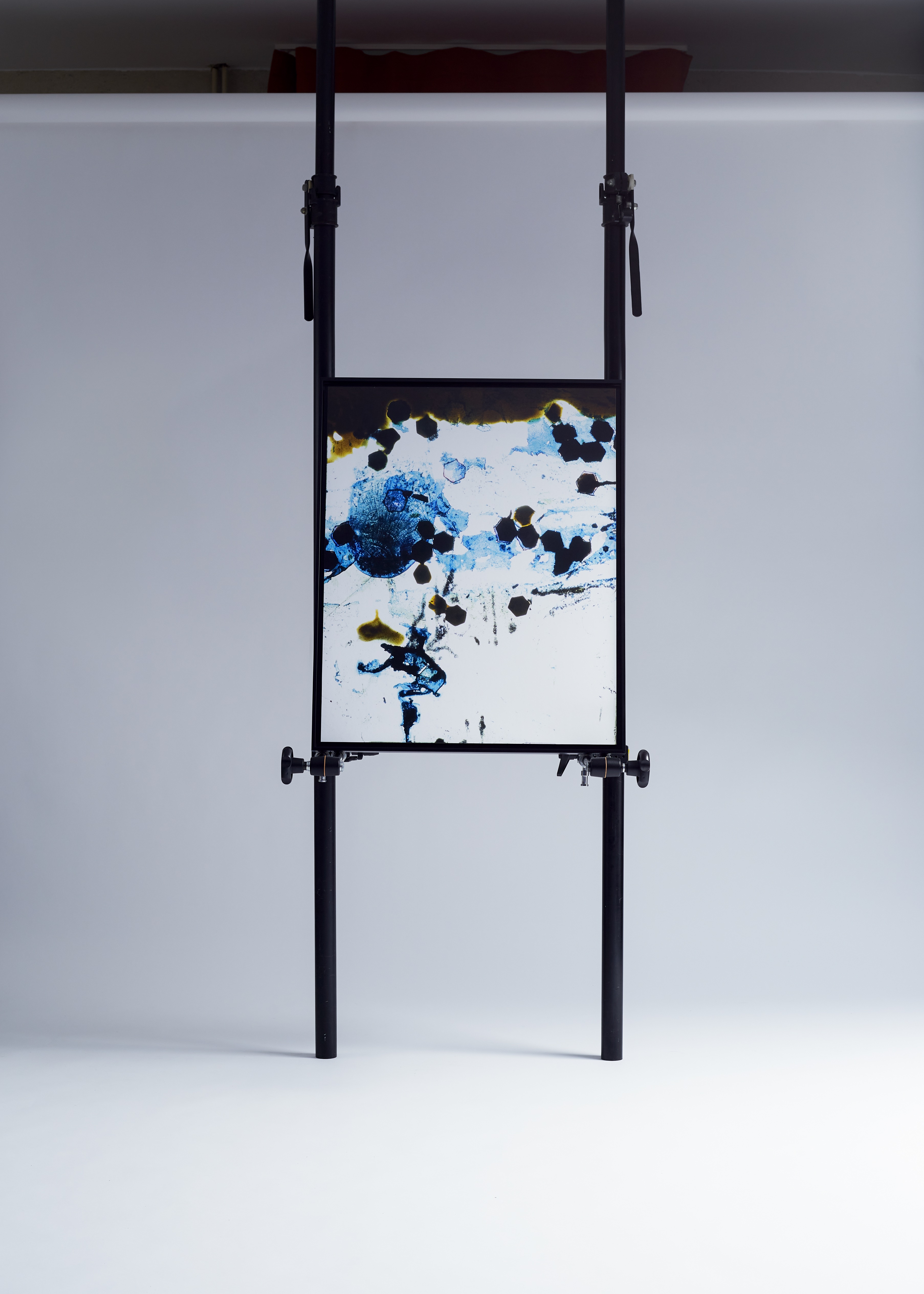
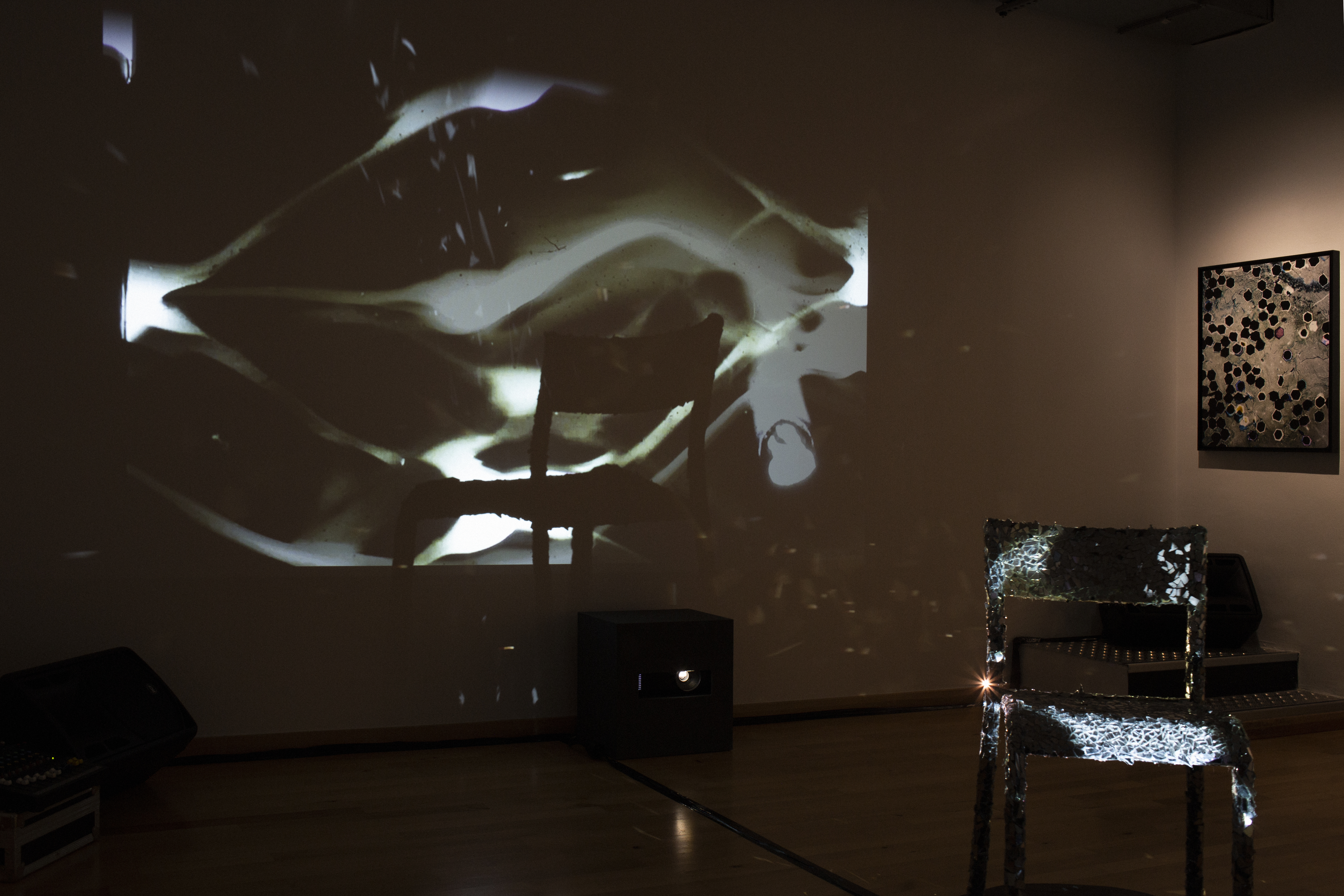
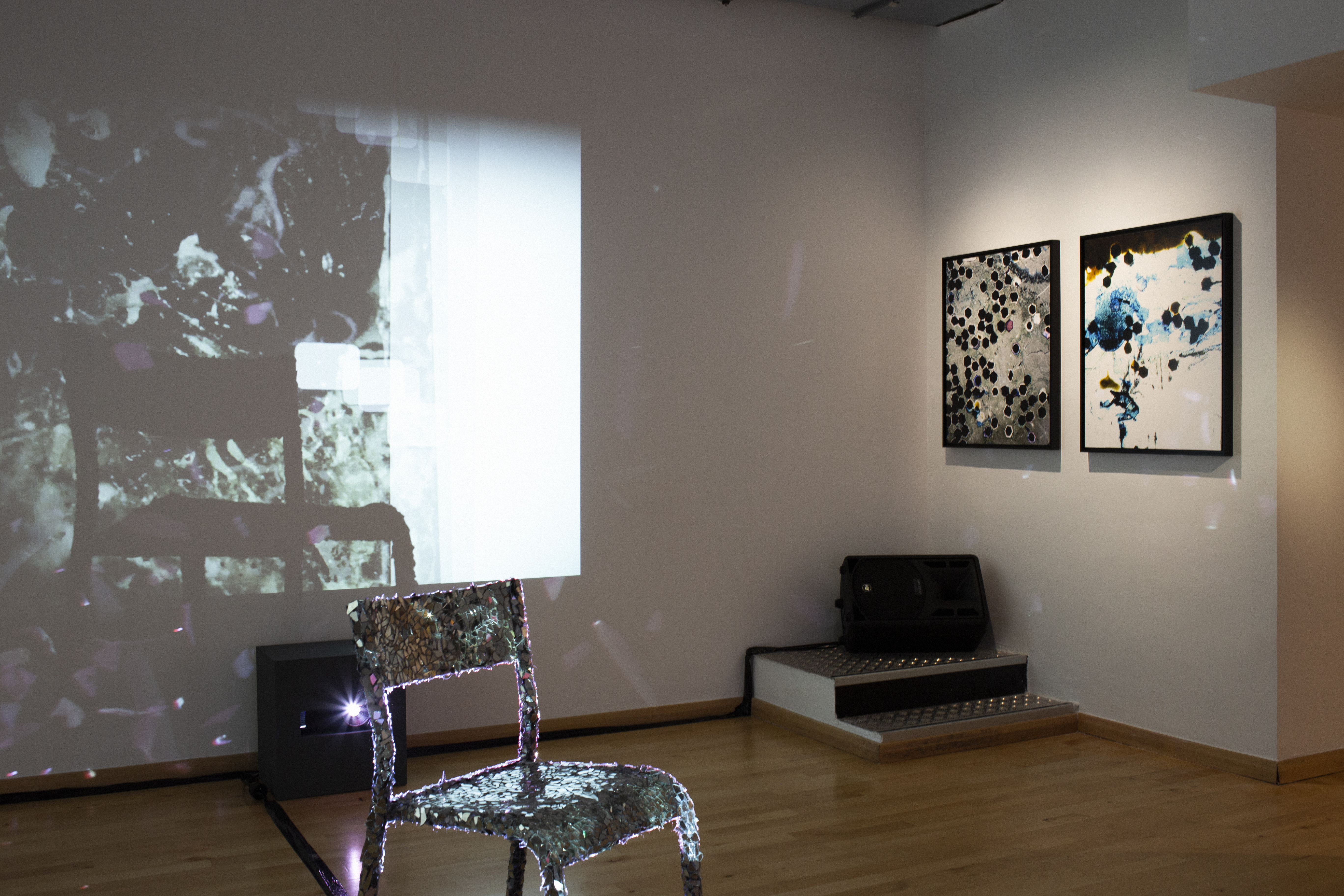



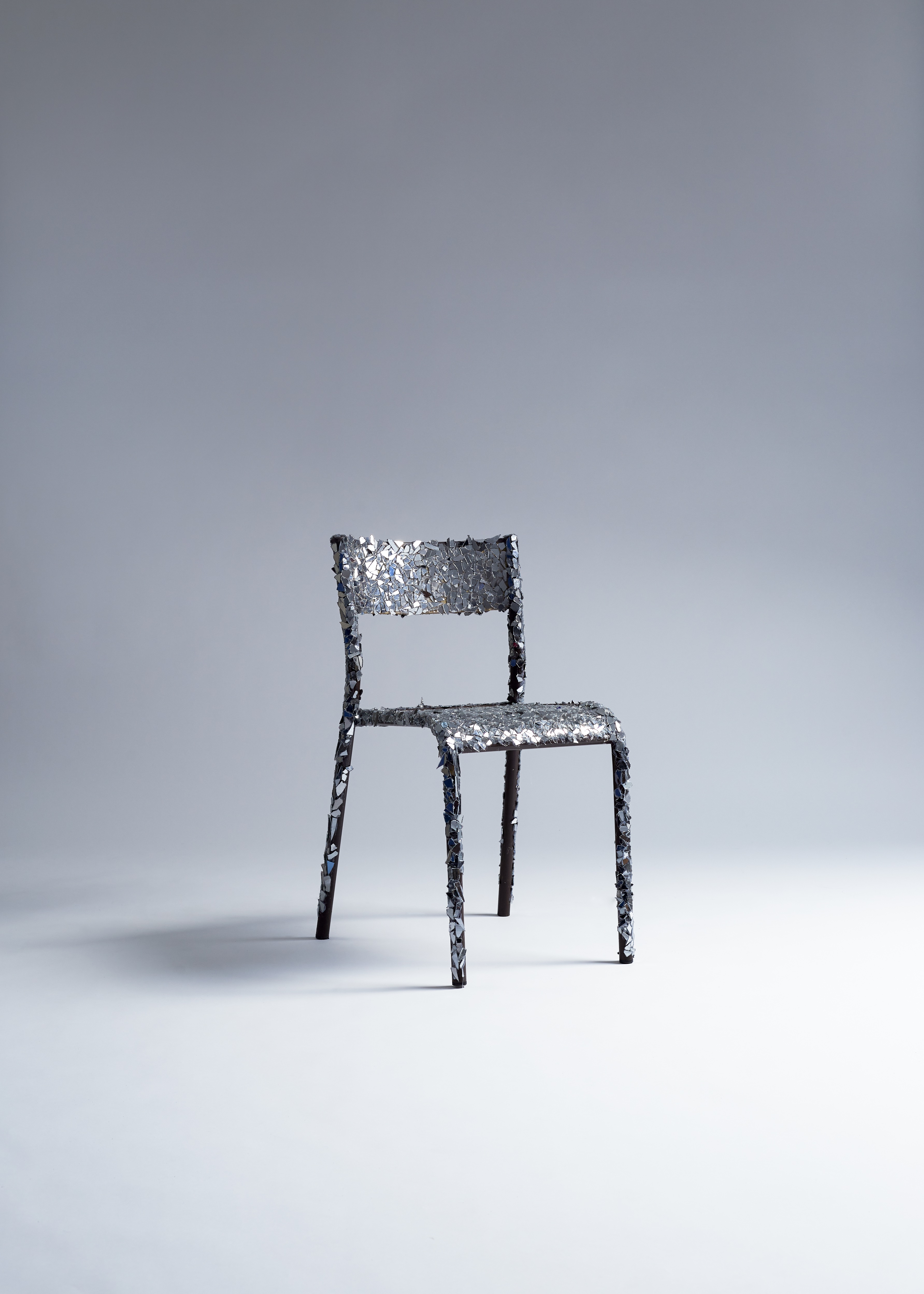
Photos by © Basil Perot et Agathe Bourrée
Mind Channels - visual and sound installation - 2023
french version :
All that jazz
Il est peu de mots qui pose autant de désaccords que celui de jazz. Son origine, nébuleuse, le place tantôt dans un héritage africain (jasi qui signifie « vivre à toute allure, sous pression » ou jaizza « son lointain des percussions » ou encore le mot bantou jaja « danser, faire de la musique »), tantôt dans une descendance française (jaser, « causer, babiller ») ou encore anglaise (to jazz : « copuler »). Qu’il soit lié à une fleur, à un jeu de carte ou au sport, le mot est pris dans un flou sémantique et une aporie quand il s’agit de le traduire. Pour autant, dans toutes les acceptions qu’on lui donne, se glisse le sentiment d’une énergie particulière qui le renvoie à une force, quitte à ce que celle-ci soit obscène.
Ce souffle de jazz, proprement pluriel et indicible, se diffuse dans l’installation Mind Channels de Sarah Konté. Il l’innerve, peut-être l’énerve. C’est ce que signalent les premiers mots de la bande sonore, « All that jazz », comme une alarme inquiétante et suave qui sonne en boucle, dans un flux et un flot qui chercheraient à dégager, dans l’expression, un sens indétecté. Puis, se décline une phrase « I’d like to see » sur une même modalité, inlassablement répétée qui résonne, dans la matière sonore, comme une ironie ou un vœu de synesthésie mais qui pour le public indique une forme de voyeurisme. Pour autant, plus les échos s'enchaînent, plus les mots semblent se vider de leur signifié et flotter dans une atmosphère où l’on perd tout repère sémantique. Peu à peu se tissent une intimité et une étroite proximité entre les écouteur.euses et les voix qui s’y croisent : on entend des petits mots entendus à l’écart des conversations, des rires éclatés, des bruits de fond de discussion dans des langues qui se frôlent et se mélangent. Des sons tubulaires jouxtent quelques rares silences et des voix stridentes. « All that jazz, all these lights », « Isn’t that strange ? », « It’s not a dream, it’s not a dream » : un ronronnement latent, presque patent et irréel conduit l’ensemble et interroge ce qu’on entend. Le tout grésille, se raye, se brouille, se dilue, dans la fragile connexion d’une partition spatiale qui ressemble étrangement à la mémoire d’un esprit dont les pensées se choquent sans logique apparente. Mind Channels.
Et à une femme de dire « on a des souvenirs identiques mais leur interprétation est différente ». La déclaration se détache et éclaire ce qu’on voit aux murs, trois vidéos-poèmes comme un orchestre de portraits qui discutent. Dans chaque vidéo, on voit un.e ami.e de l’artiste : JaMila, Samar et Bayo. Soit que le poème motive la vidéo (OH THE BLISS), soit que la vidéo motive le poème (MY NAME IS) ou que la vidéo et le poème s’appellent (AMONG BITTEN DOGS), l’œuvre mélange des voix et des figures qui se ternissent, presque s’évanouissent dans le crépitement et le grain de vidéos, par endroits brouillées et amputées, comme des souvenirs digérés. Les titres, tirés des derniers vers de chaque poème composés par les ami.e.s de l’artiste, formulent ensemble un nouveau poème, le sien, presque un haïku : « OH THE BLISS MY NAME IS AMONG BITTEN DOGS ».
De la vidéo sont également extraites quatre photographies, des tirages qui marquent dans un registre résolument abstrait une attention microscopique, anatomique et cellulaire à des formes organiques qui s'étiolent. Réalisées à partir de films et grâce à la technique de la rayographie, elles montrent toute la fabrique d’une image piégée dans l’immobilité et vivante pour autant, animée d’une poésie fragmentaire. Un même morcellement se retrouve dans cette chaise faite de miroirs brisés qui, seule, tourne et danse sur elle-même, sur un promontoir noir. Dans l’héritage de la plateforme de Felix-Gonzalès Torres, elle paraît comme une présence qui s’efface sur un socle qui vibre silencieusement et dans le brouhaha de l’esprit. All that jazz… All that jazz.
by Lou-Justin Tailhades
english version :
Few words are as controversial as jazz. Its nebulous origins place it sometimes in an African heritage (jasi meaning "to live at full speed, under pressure" or jaizza "distant sound of percussion" or the Bantu word jaja "to dance, make music"), sometimes in a French descent (jaser, "to chat, babble") or even English (to jazz: "to copulate"). Whether linked to a flower, a card game or sport, the word is caught in a semantic limbo and aporia when it comes to translation. And yet, in all its meanings, the word is imbued with a particular energy that refers to a force, even if this force is obscene.
This breath of jazz, properly plural and indescribable, is diffused in Sarah Konté's Mind Channels installation. It permeates it, perhaps even irritates it. This is signaled by the first words of the soundtrack, "All that jazz", like a disquieting, suave alarm that rings out in a loop, in a flow and flux that seeks to release, in the expression, an undetected meaning. Then comes the phrase "I'd like to see" in the same modality, endlessly repeated, resonating in the sound material like irony or a wish for synesthesia, but for the audience indicating a form of voyeurism. And yet, the more the echoes follow one another, the more the words seem to lose their meaning and float in an atmosphere where we lose all semantic reference points. Little by little, an intimacy and close proximity develops between the listeners and the intersecting voices: we hear little words overheard on the sidelines of conversations, bursts of laughter, background noises of discussion in languages that brush against and mix with each other. Tubular sounds play alongside rare silences and strident voices. "All that jazz, all these lights", "Isn't that strange?", "It's not a dream, it's not a dream": a latent, almost patent, unreal hum drives the whole and questions what we hear. The whole thing sizzles, scratches, blurs and dilutes, in the fragile connection of a spatial score that strangely resembles the memory of a mind whose thoughts collide without apparent logic. Mind Channels.
And a woman says, "We have identical memories, but their interpretation is different. The statement stands out and illuminates what we see on the walls, three video-poems like an orchestra of talking portraits. Each video features one of the artist's friends: JaMila, Samar and Bayo. Whether the poem motivates the video (OH THE BLISS), the video motivates the poem (MY NAME IS) or the video and poem call each other (AMONG BITTEN DOGS), the work blends voices and figures that fade, almost vanish, in the crackle and grain of the videos, in places blurred and amputated, like digested memories. The titles, taken from the last lines of each poem composed by the artist's friends, together form a new poem, her own, almost a haiku: "OH THE BLISS MY NAME IS AMONG BITTEN DOGS".
Four photographs are also extracted from the video, prints that, in a resolutely abstract register, mark a microscopic, anatomical and cellular attention to withering organic forms. Produced from film using the rayography technique, they show the entire fabrication of an image trapped in immobility, yet alive with fragmentary poetry. The same fragmentation can be seen in this chair made of broken mirrors, which turns and dances on its own on a black promontory. In the legacy of Felix-Gonzalès Torres's platform, it appears as a fading presence on a base that vibrates silently in the hubbub of the mind. All that jazz... All that jazz.
by Lou-Justin Tailhades
https://www.monnaiedeparis.fr/fr/exposition-bonsoir-memoire-villa-dufraine
french version :
All that jazz
Il est peu de mots qui pose autant de désaccords que celui de jazz. Son origine, nébuleuse, le place tantôt dans un héritage africain (jasi qui signifie « vivre à toute allure, sous pression » ou jaizza « son lointain des percussions » ou encore le mot bantou jaja « danser, faire de la musique »), tantôt dans une descendance française (jaser, « causer, babiller ») ou encore anglaise (to jazz : « copuler »). Qu’il soit lié à une fleur, à un jeu de carte ou au sport, le mot est pris dans un flou sémantique et une aporie quand il s’agit de le traduire. Pour autant, dans toutes les acceptions qu’on lui donne, se glisse le sentiment d’une énergie particulière qui le renvoie à une force, quitte à ce que celle-ci soit obscène.
Ce souffle de jazz, proprement pluriel et indicible, se diffuse dans l’installation Mind Channels de Sarah Konté. Il l’innerve, peut-être l’énerve. C’est ce que signalent les premiers mots de la bande sonore, « All that jazz », comme une alarme inquiétante et suave qui sonne en boucle, dans un flux et un flot qui chercheraient à dégager, dans l’expression, un sens indétecté. Puis, se décline une phrase « I’d like to see » sur une même modalité, inlassablement répétée qui résonne, dans la matière sonore, comme une ironie ou un vœu de synesthésie mais qui pour le public indique une forme de voyeurisme. Pour autant, plus les échos s'enchaînent, plus les mots semblent se vider de leur signifié et flotter dans une atmosphère où l’on perd tout repère sémantique. Peu à peu se tissent une intimité et une étroite proximité entre les écouteur.euses et les voix qui s’y croisent : on entend des petits mots entendus à l’écart des conversations, des rires éclatés, des bruits de fond de discussion dans des langues qui se frôlent et se mélangent. Des sons tubulaires jouxtent quelques rares silences et des voix stridentes. « All that jazz, all these lights », « Isn’t that strange ? », « It’s not a dream, it’s not a dream » : un ronronnement latent, presque patent et irréel conduit l’ensemble et interroge ce qu’on entend. Le tout grésille, se raye, se brouille, se dilue, dans la fragile connexion d’une partition spatiale qui ressemble étrangement à la mémoire d’un esprit dont les pensées se choquent sans logique apparente. Mind Channels.
Et à une femme de dire « on a des souvenirs identiques mais leur interprétation est différente ». La déclaration se détache et éclaire ce qu’on voit aux murs, trois vidéos-poèmes comme un orchestre de portraits qui discutent. Dans chaque vidéo, on voit un.e ami.e de l’artiste : JaMila, Samar et Bayo. Soit que le poème motive la vidéo (OH THE BLISS), soit que la vidéo motive le poème (MY NAME IS) ou que la vidéo et le poème s’appellent (AMONG BITTEN DOGS), l’œuvre mélange des voix et des figures qui se ternissent, presque s’évanouissent dans le crépitement et le grain de vidéos, par endroits brouillées et amputées, comme des souvenirs digérés. Les titres, tirés des derniers vers de chaque poème composés par les ami.e.s de l’artiste, formulent ensemble un nouveau poème, le sien, presque un haïku : « OH THE BLISS MY NAME IS AMONG BITTEN DOGS ».
De la vidéo sont également extraites quatre photographies, des tirages qui marquent dans un registre résolument abstrait une attention microscopique, anatomique et cellulaire à des formes organiques qui s'étiolent. Réalisées à partir de films et grâce à la technique de la rayographie, elles montrent toute la fabrique d’une image piégée dans l’immobilité et vivante pour autant, animée d’une poésie fragmentaire. Un même morcellement se retrouve dans cette chaise faite de miroirs brisés qui, seule, tourne et danse sur elle-même, sur un promontoir noir. Dans l’héritage de la plateforme de Felix-Gonzalès Torres, elle paraît comme une présence qui s’efface sur un socle qui vibre silencieusement et dans le brouhaha de l’esprit. All that jazz… All that jazz.
by Lou-Justin Tailhades
english version :
Few words are as controversial as jazz. Its nebulous origins place it sometimes in an African heritage (jasi meaning "to live at full speed, under pressure" or jaizza "distant sound of percussion" or the Bantu word jaja "to dance, make music"), sometimes in a French descent (jaser, "to chat, babble") or even English (to jazz: "to copulate"). Whether linked to a flower, a card game or sport, the word is caught in a semantic limbo and aporia when it comes to translation. And yet, in all its meanings, the word is imbued with a particular energy that refers to a force, even if this force is obscene.
This breath of jazz, properly plural and indescribable, is diffused in Sarah Konté's Mind Channels installation. It permeates it, perhaps even irritates it. This is signaled by the first words of the soundtrack, "All that jazz", like a disquieting, suave alarm that rings out in a loop, in a flow and flux that seeks to release, in the expression, an undetected meaning. Then comes the phrase "I'd like to see" in the same modality, endlessly repeated, resonating in the sound material like irony or a wish for synesthesia, but for the audience indicating a form of voyeurism. And yet, the more the echoes follow one another, the more the words seem to lose their meaning and float in an atmosphere where we lose all semantic reference points. Little by little, an intimacy and close proximity develops between the listeners and the intersecting voices: we hear little words overheard on the sidelines of conversations, bursts of laughter, background noises of discussion in languages that brush against and mix with each other. Tubular sounds play alongside rare silences and strident voices. "All that jazz, all these lights", "Isn't that strange?", "It's not a dream, it's not a dream": a latent, almost patent, unreal hum drives the whole and questions what we hear. The whole thing sizzles, scratches, blurs and dilutes, in the fragile connection of a spatial score that strangely resembles the memory of a mind whose thoughts collide without apparent logic. Mind Channels.
And a woman says, "We have identical memories, but their interpretation is different. The statement stands out and illuminates what we see on the walls, three video-poems like an orchestra of talking portraits. Each video features one of the artist's friends: JaMila, Samar and Bayo. Whether the poem motivates the video (OH THE BLISS), the video motivates the poem (MY NAME IS) or the video and poem call each other (AMONG BITTEN DOGS), the work blends voices and figures that fade, almost vanish, in the crackle and grain of the videos, in places blurred and amputated, like digested memories. The titles, taken from the last lines of each poem composed by the artist's friends, together form a new poem, her own, almost a haiku: "OH THE BLISS MY NAME IS AMONG BITTEN DOGS".
Four photographs are also extracted from the video, prints that, in a resolutely abstract register, mark a microscopic, anatomical and cellular attention to withering organic forms. Produced from film using the rayography technique, they show the entire fabrication of an image trapped in immobility, yet alive with fragmentary poetry. The same fragmentation can be seen in this chair made of broken mirrors, which turns and dances on its own on a black promontory. In the legacy of Felix-Gonzalès Torres's platform, it appears as a fading presence on a base that vibrates silently in the hubbub of the mind. All that jazz... All that jazz.
by Lou-Justin Tailhades
https://www.monnaiedeparis.fr/fr/exposition-bonsoir-memoire-villa-dufraine

SILICE AMORPHE
Part I
" A journey through the state of matter. "
An Installation - Performance
by
Sarah Konté & Selma Stocker
Videos, Sculptures and Sound composed by Sarah Konté.
Danced by Luella Rebbeck & Selma Stocker.
Choreographed by Selma Stocker.
Silice AmorphE is an installation performance, using dance, video, sculpture and sound exploring the ever-changing state of materials.
As molecules in motion, two bodies dance through changing states of matter. Via the medium of glass, like an enchanting mirror, reflections blur the lines between what's seen and unseen.
Based on prayers written on the altar and left there as an offering to the Mirror-Hand, protective goddess of individuality, two bodies meet.
Exploring the quest for identity in a timeless world, two bodies come together and seek to adapt to a new being in the world. The song of a mermaid beckons, guiding them into this new world.
Between a voyage of initiation to a new land and into themselves, the bodies test themselves, look at each other and come together. Through the eyes of the other, an attempt to understand each other takes shape, and individualities become stronger together, in a shared sense of listening.
As molecules in motion, two bodies dance through changing states of matter. Via the medium of glass, like an enchanting mirror, reflections blur the lines between what's seen and unseen.
Based on prayers written on the altar and left there as an offering to the Mirror-Hand, protective goddess of individuality, two bodies meet.
Exploring the quest for identity in a timeless world, two bodies come together and seek to adapt to a new being in the world. The song of a mermaid beckons, guiding them into this new world.
Between a voyage of initiation to a new land and into themselves, the bodies test themselves, look at each other and come together. Through the eyes of the other, an attempt to understand each other takes shape, and individualities become stronger together, in a shared sense of listening.
Sarah Konté

